Microsoft Exchange Server
Microsoft Exchange Server is able to set and access email, calendar and contact information on all your devices and programs. With the simple UI/UX design as well as the high accessibility of this program, Exchange Server has reached a new level of reliability and simplification. Exchange can protect sensitive and confidential information and reduce maintenance costs.
Legal sale of the original license of Exchange Server

Exchange Server is one of the most useful messaging systems in the market and it is also the most popular system used in organizations.
Microsoft Exchange Server is one of Microsoft's biggest projects and a subset of Microsoft's Microsoft Server products. This project provides the possibility to send, receive and manage Email, calls, calendar.One of the main and basic uses of Exchange Server is to set up Public Folder, which is for sharing received and sent emails among its users. The key feature is to set the permissions to read or delete as well as create mails and folders. Another key use of Exchange Server is the ability to connect multiple servers to each other and categorize users.
E-mail service or e-mail server is a software application that receives e-mails from e-mail receivers (clients) or e-mail servers (e-mail servers) and then delivers them to the recipients. These servers include memory for storing messages, a series of adjustable functions, a list of users and several communication modules. In this way, a company or organization can have a service like Outlook or Gmail for itself and benefit from its facilities and define functions according to its needs.
Features of Microsoft Exchange Server
Email hosting is more than just an email server
Companies are able to manage tasks, calendars, and notes with their domain settings to use Exchange server hosting in Microsoft's cloud service. Now, apart from the ability to receive and send emails, organizations will be able to define tasks according to their needs and assign them to their team members. Also, recording meeting appointments in the calendar is another feature of Microsoft Exchange, and besides that, it is possible to mention the ability to share and organize group meetings through this service.
Fully integrated with Outlook
Microsoft has designed and released Outlook as an Exchange server client. Apart from that, Microsoft has made it possible to connect to other email providers through POP3 and IMAP protocols.
Unified Messaging system
The mail exchange unit system allows receiving various types of messages such as faxes, voice mails, as well as new features such as receiving voice messages by phone.
Equipped with anti-spam and Kaspersky antivirus
Kaspersky Anti-Virus and Anti-Spam is fully integrated with Exchange Server. This tool verifies all sent and received e-mails to the server and automatically deletes them if they are infected with viruses and labels unwanted e-mails as spam. know
Confidentiality in the exchange of electronic mail
. By using powerful encryption functions used in electronic mail exchange, including the use of internal mail exchange PKI structure and electronic mail over the Internet, it maintains the confidentiality of exchanged mail.
Integrated with Microsoft CRM software
This feature allows companies and organizations to send emails to their customer lists directly through the CRM software. Even replying to email by the customer will be recorded as his activity in the customer relationship management software.
Integration and access on various mobile devices, tablets and computers
In this way, you can connect to Outlook through various devices and browsers and access emails offline. In this diversity, integration is a distinctive feature of Microsoft Exchange.
Using Powershell Power-shell
By using this feature, multiple operations can be created and executed simultaneously in the form of a script.
High availability or High Availability
In fact, it makes it possible for several servers to be backed up so that when a problem occurs for any of the servers, the other servers continue to work.
Exchange Server
Work smarter, anywhere, with business email on your own servers.
Microsoft Exchange Server is a mail server and calendaring server developed by Microsoft. It runs exclusively on Windows Server operating systems.
Microsoft Exchange Server brings a new set of technologies, features, and services to Exchange Server, the messaging platform that provides email, scheduling, and tools for custom collaboration and messaging service applications. Its goal is to support people and organizations as their work habits evolve from a communication focus to a collaboration focus. At the same time, Exchange 2016 helps lower the total cost of ownership whether you deploy Exchange 2016 on-premises or provision your mailboxes in the cloud.
Exchange Server
• Mailbox Server and Edge Transport are the only roles available.
• Updates to the UI in Outlook on the web (formerly Outlook Web App).
• Office 365 hybrid: The Hybrid Configuration Wizard (HCW) included with Exchange 2013 is moving to become a cloud-based application. When configuring a hybrid deployment in Exchange 2016, the users will be prompted to download and install the wizard as a small app.
• Messaging policy and compliance: New DLP and Archiving/Retention/eDiscovery features.
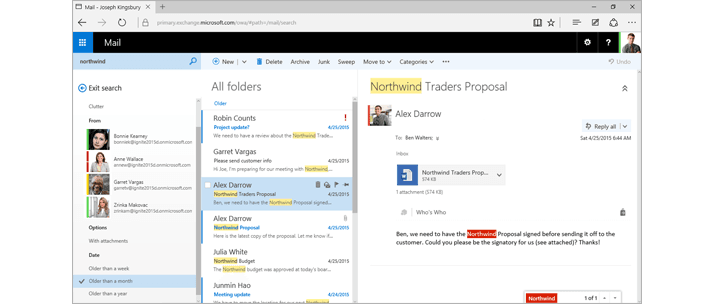
Exchange helps you get more done through faster search and an inbox that is more personalized, more helpful, and more intelligent.
A simplified architecture, originally forged in the cloud, combines the mailbox and client access roles, so it's easier to plan and scale your deployments.
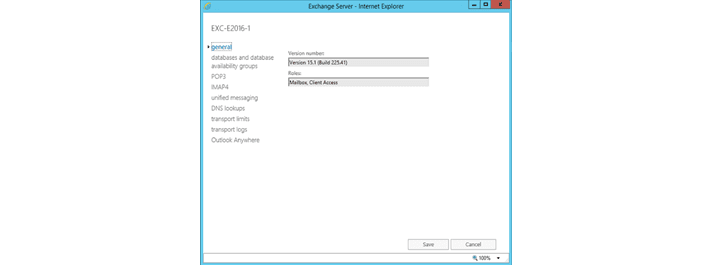
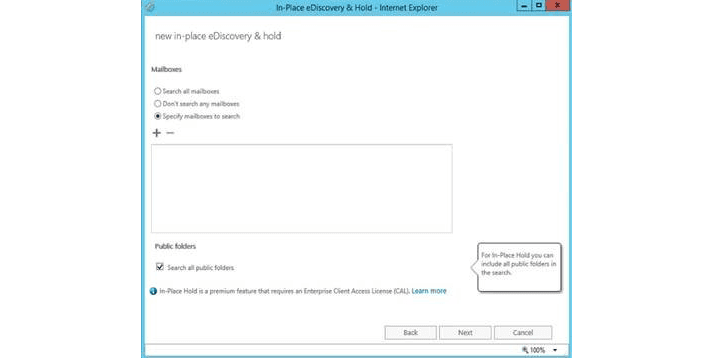
Data loss prevention (DLP) in Exchange Server includes more in-the-box sensitive information types. And enhanced auditing enables better reporting and easier integration with third-party tools.
With its new approach to attachments that eliminates versioning headaches, plus other enhancements, Exchange Server makes working together on documents easier.
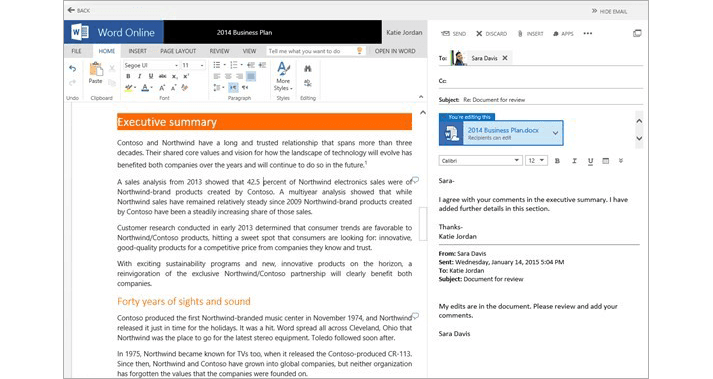
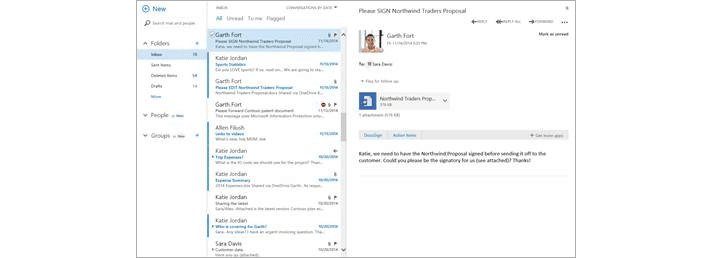
Exchange Server powers the latest Outlook experiences on phones, tablets, desktops, and the web so you can get more done, wherever you are.
